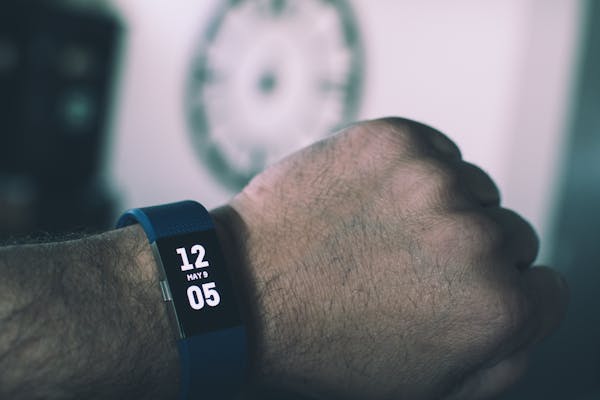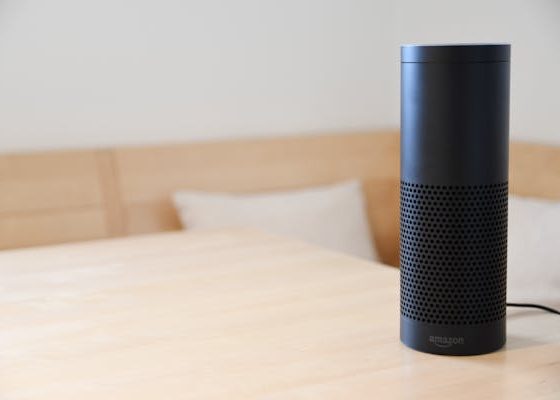
In recent years, wearable health monitors have gained significant attention and popularity, becoming a pivotal component of modern healthcare and wellness. These innovative devices, designed to be worn on the body, have revolutionized how individuals monitor and manage their health. With a wide range of functionalities, wearable health monitors offer insights into various aspects of one’s well-being, including heart rate, sleep patterns, physical activity, and more. This article delves into the benefits of wearable health monitors, exploring their impact on personal health management, the technology behind them, and their potential future developments.
Understanding Wearable Health Monitors
Wearable health monitors are electronic devices equipped with sensors and software to track and analyze physiological and biological data. They are typically worn on the wrist, like smartwatches and fitness trackers, or as other accessories such as rings, patches, or clothing. These devices use advanced technology, including optical sensors, accelerometers, and gyroscopes, to collect data and provide users with real-time information about their health status.
Key Features of Wearable Health Monitors
- Heart Rate Monitoring: Many wearable devices can continuously monitor heart rate, providing insights into resting heart rate, heart rate variability, and stress levels.
- Sleep Tracking: Wearable health monitors can analyze sleep patterns, offering data on sleep duration, quality, and stages (light, deep, and REM sleep).
- Physical Activity Tracking: These devices track various forms of physical activity, such as steps taken, calories burned, distance traveled, and active minutes.
- Electrocardiogram (ECG) and Blood Pressure Monitoring: Advanced wearable monitors can perform ECG readings and monitor blood pressure, helping users keep track of their cardiovascular health.
- SpO2 Monitoring: Some devices measure blood oxygen levels (SpO2), providing information about respiratory function and oxygen saturation.
- Stress and Emotional Monitoring: Wearables can assess stress levels and emotional well-being by analyzing physiological markers such as heart rate variability.
- Smart Notifications and Alerts: Wearable health monitors can send notifications and alerts related to health metrics, reminding users to stay active, hydrate, or take medication.
The Benefits of Wearable Health Monitors
These devices play a crucial role in promoting a proactive approach to health management, offering numerous advantages for individuals and healthcare systems alike.
1. Personalized Health Insights
Wearable health monitors provide users with personalized health data, enabling them to better understand their bodies and make informed decisions about their well-being. By tracking metrics such as heart rate, sleep, and physical activity, users can identify patterns and trends that may indicate potential health issues. This information empowers individuals to take proactive steps to improve their health, whether through lifestyle changes, diet modifications, or seeking medical advice.
2. Early Detection of Health Issues
One of the most significant benefits of wearable health monitors is their ability to detect early signs of health problems. For example, continuous heart rate monitoring can reveal irregularities that may indicate cardiovascular issues, such as arrhythmias or hypertension. Early detection allows for timely intervention and treatment, potentially preventing more severe health complications.
3. Enhanced Chronic Disease Management
Wearable health monitors are invaluable tools for individuals with chronic conditions such as diabetes, hypertension, or asthma. These devices enable continuous monitoring of relevant health metrics, allowing patients and healthcare providers to track the effectiveness of treatment plans and make adjustments as needed. For instance, diabetics can use wearable glucose monitors to track blood sugar levels and manage their condition more effectively.
4. Improved Physical Fitness and Activity Levels
Fitness enthusiasts and athletes benefit greatly from wearable health monitors, which provide detailed insights into physical activity levels, workout intensity, and overall fitness. These devices help users set and achieve fitness goals, track progress, and optimize their training routines. Features such as GPS tracking, calorie counting, and workout analysis make it easier to maintain a healthy lifestyle and stay motivated.
5. Sleep Quality Monitoring
Quality sleep is essential for overall health and well-being. Wearable health monitors equipped with sleep tracking capabilities can analyze sleep patterns, providing data on sleep duration, quality, and disturbances. Users can use this information to improve their sleep hygiene, identify factors affecting sleep, and implement changes to achieve better rest.
6. Stress and Mental Health Management
Wearable health monitors can also play a role in managing stress and mental health. By tracking physiological markers such as heart rate variability, these devices can provide insights into stress levels and emotional well-being. Users can receive notifications and recommendations to practice relaxation techniques, engage in mindfulness exercises, or seek professional help if needed.
7. Remote Health Monitoring and Telemedicine
Wearable health monitors have become integral to telemedicine and remote health monitoring. Patients can share real-time health data with healthcare providers, allowing for remote consultations and monitoring. This is particularly beneficial for individuals with limited access to healthcare facilities or those requiring continuous monitoring. Remote health monitoring can lead to more efficient and timely medical interventions, reducing the burden on healthcare systems.
8. Motivation and Accountability
Wearable health monitors often come with features like goal setting, challenges, and social sharing, which can boost motivation and accountability. Users can set daily or weekly goals for steps, exercise, or sleep and receive reminders and notifications to stay on track. Sharing progress with friends and family or participating in community challenges can further enhance motivation and adherence to healthy habits.
9. Data-Driven Healthcare Decisions
The data collected by wearable health monitors can contribute to more data-driven healthcare decisions. Healthcare providers can access comprehensive and continuous health data, enabling them to make more accurate diagnoses and tailor treatment plans to individual needs. This data can also be used for research purposes, contributing to advancements in medical knowledge and the development of new treatments.
10. Empowerment and Health Awareness
Ultimately, the benefits of wearable health monitors lie in the empowerment and increased health awareness they provide. Users become more engaged in their health and well-being, making conscious choices to improve their quality of life. By taking an active role in monitoring their health, individuals can better manage existing conditions, prevent potential issues, and achieve their wellness goals.
The Technology Behind Wearable Health Monitors
The effectiveness of wearable health monitors is largely attributed to the advanced technology and sensors integrated into these devices. Let’s explore some of the key technologies that make these devices so powerful.
1. Optical Sensors
Optical sensors, such as photoplethysmography (PPG) sensors, are commonly used in wearable health monitors to measure heart rate and blood oxygen levels. PPG sensors work by emitting light into the skin and detecting changes in light absorption caused by blood flow. This technology allows for non-invasive and continuous monitoring of cardiovascular and respiratory metrics.
2. Accelerometers and Gyroscopes
Accelerometers and gyroscopes are motion sensors used to track physical activity, movement, and orientation. These sensors can detect steps taken, distance traveled, and even the type of activity (walking, running, cycling). They are also used in sleep tracking to monitor movement and detect sleep stages.
3. Electrocardiogram (ECG) Sensors
ECG sensors are used in more advanced wearable health monitors to measure electrical activity in the heart. This technology provides detailed insights into heart rhythm and can detect irregularities such as atrial fibrillation. ECG data can be valuable for individuals with heart conditions and for monitoring overall cardiovascular health.
4. Bioimpedance Sensors
Bioimpedance sensors measure the resistance of body tissues to an electrical current, providing data on body composition, hydration levels, and even respiratory rate. This technology is used in devices that monitor body fat percentage and muscle mass.
5. GPS and Location Tracking
GPS technology is integrated into many wearable health monitors to provide accurate location tracking for outdoor activities such as running, cycling, and hiking. GPS data can be used to calculate distance, speed, and elevation gain, making it valuable for fitness enthusiasts and athletes.
6. Bluetooth and Wireless Connectivity
Wearable health monitors often feature Bluetooth and wireless connectivity, allowing them to sync data with smartphones, tablets, and other devices. This enables users to view detailed health reports, track progress over time, and share data with healthcare providers or fitness apps.
7. Artificial Intelligence (AI) and Machine Learning
AI and machine learning algorithms are increasingly being integrated into wearable health monitors to analyze data and provide personalized recommendations. These technologies can identify patterns, predict potential health issues, and offer insights tailored to individual needs.
Future Developments in Wearable Health Monitors
The field of wearable health monitors is rapidly evolving, with ongoing advancements in technology and innovation. Several exciting developments are on the horizon, promising to enhance the capabilities and benefits of these devices.
1. Advanced Health Metrics
Future wearable health monitors may incorporate more advanced health metrics, such as continuous blood glucose monitoring, hydration levels, and even biomarkers for detecting diseases. These capabilities could revolutionize chronic disease management and provide more comprehensive health insights.
2. Integration with Medical Devices
As wearable health monitors become more sophisticated, there is potential for integration with medical devices such as insulin pumps, pacemakers, and inhalers. This integration could lead to seamless data sharing and automated adjustments to treatment plans based on real-time health data.
3. Improved Accuracy and Precision
Advancements in sensor technology and data analysis algorithms are expected to improve the accuracy and precision of wearable health monitors. This will enhance the reliability of health data and provide users with more accurate and actionable insights.
4. Wearable Biometric Authentication
Wearable health monitors may play a role in biometric authentication, using unique physiological data such as heart rate patterns or ECG signatures for secure identity verification. This could have applications in digital security, access control, and payment systems, providing an additional layer of security and convenience.
5. Enhanced User Experience and Design
The future of wearable health monitors will likely see improvements in user experience and design. Devices will become more comfortable, stylish, and customizable, encouraging wider adoption. The development of flexible, skin-like sensors could enable seamless integration with clothing or direct skin application, offering a more natural and unobtrusive user experience.
6. Expanded Ecosystems and Interoperability
As wearable health monitors become more integrated into the broader healthcare ecosystem, there will be a greater emphasis on interoperability. Future devices will likely be compatible with a wider range of health apps, electronic health records (EHRs), and telemedicine platforms, facilitating seamless data exchange and comprehensive health management.
7. AI-Driven Health Coaching and Recommendations
AI and machine learning advancements will enable wearable health monitors to provide more personalized and context-aware health coaching. These devices could analyze data in real-time and offer tailored recommendations for nutrition, exercise, stress management, and sleep, helping users make healthier lifestyle choices.
8. Remote Monitoring and Preventive Healthcare
Wearable health monitors will play a crucial role in the shift towards preventive healthcare and remote patient monitoring. By continuously collecting health data, these devices can help identify early signs of diseases and health deterioration, prompting timely medical interventions. This approach can reduce hospital admissions and healthcare costs while improving patient outcomes.
9. Integration with Augmented Reality (AR) and Virtual Reality (VR)
The integration of AR and VR technologies with wearable health monitors could open new avenues for immersive health experiences. For example, users could visualize their health metrics in 3D or participate in virtual fitness classes and guided meditation sessions. AR and VR could also enhance rehabilitation and physical therapy by providing real-time feedback and guidance.
10. Environmental and Social Factors
Future wearable health monitors may also consider environmental and social factors in health monitoring. For example, devices could track exposure to pollutants, allergens, and UV radiation, providing users with information to minimize risks. Social health metrics, such as social interactions and community engagement, could also be integrated, offering a more holistic view of well-being.
Challenges and Considerations
While wearable health monitors offer numerous benefits, several challenges and considerations must be addressed to maximize their potential.
1. Data Privacy and Security
The collection and storage of personal health data raise concerns about privacy and security. Manufacturers and developers must implement robust encryption and data protection measures to safeguard sensitive information. Additionally, clear policies and regulations are needed to ensure users’ data is handled ethically and transparently.
2. Accuracy and Reliability
Ensuring the accuracy and reliability of health data from wearable monitors is crucial, especially when used for medical purposes. Manufacturers must rigorously test and validate devices to meet clinical standards. Users should also be aware of the limitations of these devices and consult healthcare professionals for diagnosis and treatment.
3. Accessibility and Affordability
The accessibility and affordability of wearable health monitors are important considerations. While these devices are becoming more mainstream, they may still be out of reach for certain populations due to cost or technological barriers. Efforts should be made to make wearable health technology more affordable and accessible to a broader audience.
4. User Engagement and Adherence
For wearable health monitors to be effective, users must remain engaged and adhere to using the devices and following recommendations. Strategies to enhance user engagement, such as gamification, social features, and personalized feedback, can help maintain interest and motivation.
5. Regulation and Standardization
The wearable health monitor industry must navigate a complex regulatory landscape, especially as devices increasingly intersect with medical applications. Clear regulations and standards are needed to ensure safety, efficacy, and quality. Collaboration between manufacturers, healthcare providers, and regulatory bodies is essential for developing guidelines and best practices.
6. Data Integration and Interpretation
Integrating data from wearable health monitors with other health data sources, such as EHRs and laboratory results, can provide a more comprehensive view of an individual’s health. However, challenges exist in standardizing data formats and ensuring seamless data exchange. Additionally, interpreting the vast amount of data generated requires sophisticated analytics and clinical expertise.
Conclusion:
Wearable health monitors are transforming personal health management, offering individuals unprecedented insights into their well-being. The benefits of wearable health monitors extend beyond simple tracking; they empower users to take control of their health, detect potential issues early, and make informed decisions about their lifestyle and healthcare. As technology advances, these devices will become even more integral to preventive healthcare, chronic disease management, and overall wellness.
The future of wearable health monitors holds great promise, with innovations in sensors, AI, and data analytics poised to enhance their capabilities. However, addressing challenges related to privacy, accuracy, accessibility, and regulation will be crucial to realizing their full potential. As these devices continue to evolve and integrate with broader healthcare systems, they will play an increasingly vital role in shaping the future of health and wellness, ultimately contributing to a healthier, more informed society.
Wearable health monitors are more than just gadgets; they are powerful tools that can lead to a healthier and more proactive approach to personal health management. By leveraging the data and insights provided by these devices, individuals can achieve better health outcomes, healthcare providers can offer more personalized care, and the healthcare system can move towards a more preventive and patient-centered model. The journey of wearable health monitors is just beginning, and the potential benefits are boundless, making it an exciting area of innovation and growth in the years to come.



